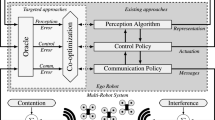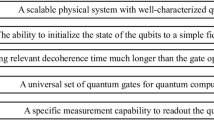Abstract
This paper proposes a Spider Monkey-based neural weight optimization approach for quicker neural synchronization. To exchange the session key across a public channel, two Artificial Neural Networks (ANNs) are synchronized through reciprocating learning. The most crucial feature of ANN coordination is evaluating how effectively sender and receiver’s ANNs coordinate without the other’s weights. Traditional algorithms have a latency in assessing coordination, which endangers neuronal coordination’s confidentiality. This research proposes a collaborative learning technique for analyzing the total synchronization of ANNs efficiently and decisively. The frequency at which the two ANNs got the same outcome in previous iterations determines synchronization. The hash is being used to evaluate if all ANNs are better aligned when a certain threshold is met. The presented technique uses the hash value of the synaptic weights to achieve complete synchronization among two communicating parties. This approach offers a number of benefits, namely (1) the usage of a Spider Monkey-based PRNG optimization to obtain the optimal weight vector. (2) The suggested method, in contrast to earlier methodologies, allows two communicating entities to discover complete collaboration more rapidly. (3) The probability of success is lowered geometrically. (4) The proposed TLTPM coordination periods are significantly quicker than the present CVTPM, VVTPM, and TPM-FPGA approaches. The suggested method improves the security of the neural key exchange protocol. The proposed approach is tested, and the findings reveal that it outperforms similar techniques currently in use.






















Similar content being viewed by others
References
Abdalrdha Z K, AL-Qinani I H, Abbas F N (2019) Subject Review : key Generation in Different Cryptography Algorithm. Int J Sci Res Sci Eng Technol 6(5):230–240. https://doi.org/10.32628/ijsrset196550
Chourasia S, Bharadwaj H C, Das Q, Agarwal K, Lavanya K (2019) Vectorized neural key exchange using tree parity machine. Secur Commun Netw 2021:3140–3145. https://doi.org/10.1155/2021/6680782
Dolecki M, Kozera R (2015) The Impact of the TPM Weights Distribution on Network Synchronization Time. In: Saeed K., Homenda W. (eds) Computer information systems and industrial management. CISIM 2015. Lecture notes in computer science(). https://doi.org/10.1007/978-3-319-24369-6_37, vol 9339. Springer, Cham
Dong T, Huang T (2020) Neural Cryptography Based on Complex-Valued Neural Network. IEEE Trans Neural Netw Learn Syst 31(11):4999–5004. https://doi.org/10.1109/TNNLS.2019.2955165
ÉDgar Salguero Dorokhin, Fuertes W, Lascano E (2019) On the Development of an Optimal Structure of Tree Parity Machine for the Establishment of a Cryptographic Key. Secur Commun Netw 2019:1–10. https://doi.org/10.1155/2019/8214681
Gao J, Yang X, Jiang Y, Song H, Choo K K R, Sun J (2021) Semantic Learning Based Cross-Platform Binary Vulnerability Search For IoT Devices. IEEE Trans Ind Inf 17(2):971–979. https://doi.org/10.1109/TII.2019.2947432
Hadke P P, Kale S G (2016) Use of neural networks in cryptography: a review. In: World conference on futuristic trends in research and innovation for social welfare (startup conclave), Coimbatore, India, 2016, pp 1–4. https://doi.org/10.1109/STARTUP.2016.7583925
Hazrati G, Bansal J C, Evolutionary and Swarm Intelligence Algorithms (2019) Spider Monkey Optimization Algorithm. In: J B, P S, N P (eds) Studies in Computational Intelligence, vol 779. Springer, Cham, DOI https://doi.org/10.1007/978-3-319-91341-4_4
Jeong S, Park C, Hong D, Seo C, Jho N (2021) Neural Cryptography Based on Generalized Tree Parity Machine for Real-Life Systems. Secur Commun Netw. https://doi.org/10.1155/2021/6680782
Jo M, Jangirala S, Das A K, Li X, Khan M K (2020) Designing Anonymous Signature-Based Authenticated Key Exchange Scheme for IoT-Enabled Smart Grid Systems. IEEE Trans Ind Inf. 1–1 https://doi.org/10.1109/TII.2020.3011849
Kanter I, Kinzel W, Kanter E (2002) Secure exchange of information by synchronization of neural networks. Europhys Lett (EPL) 57(1):141–147. https://doi.org/10.1209/epl/i2002-00552-9
Kanter I, Kinzel W, Kanter E (2002) Secure exchange of information by synchronization of neural networks. Europhys Lett (EPL) 57(1):141–147. https://doi.org/10.1209/epl/i2002-00552-9
Karakaya B, Gülten A, Frasca M (2019) A true random bit generator based on a memristive chaotic circuit: Analysis, design and FPGA implementation. Chaos Solitons Fractals 119:143–149
Liu L, Miao S, Hu H, Deng Y (2016) Pseudo-random bit generator based on non-stationary logistic maps. IET Inf Secur 10:87–94
Liu P, Zeng Z, Wang J (2019) Global synchronization of coupled fractional-order recurrent neural networks. IEEE Trans Neural Netw Learn Syst 30(8):2358–2368
Lu Y, Huang X, Dai Y, Maharjan S, Zhang Y (2020) Blockchain and Federated Learning for Privacy-Preserved Data Sharing in Industrial IoT. IEEE Trans Ind Inf 16(6):4177–4186. https://doi.org/10.1109/TII.2019.2942190
Makkar A, Garg S, Kumar N, Hossain M S, Ghoneim A, Alrashoud M (2021) An Efficient Spam Detection Technique for IoT Devices Using Machine Learning. IEEE Trans Ind Inf 17(2):903–912. https://doi.org/10.1109/TII.2020.2968927
Mehic M, Niemiec H, Siljak M, Voznak (2020) Error reconciliation in quantum key distribution protocols. In: Ulidowski I, Lanese I, Schultz U, Ferreira C (eds) Reversible computation: extending horizons of computing. RC 2020. Lecture notes in computer science(), vol 12070. Springer, Cham. https://doi.org/10.1007/978-3-030-47361-7_11
Niemiec (2019) Error correction in quantum cryptography based on artificial neural networks. Quantum Inf Process 18:174–174. https://doi.org/10.1007/s11128-019-2296-4
Niemiec M, Mehic M, Voznak (2018) Security verification of artificial neural networks used to error correction in quantum cryptography. In: 2018 26th Telecommunications Forum (TELFOR), Belgrade, Serbia, pp 1–4. https://doi.org/10.1109/TELFOR.2018.8612006
NIST (2020) NIST Statistical Test. http://csrc.nist.gov/groups/ST/toolkit/rng/stats_tests.html. Accessed 10 March 2021
Pal S K, Mishra S, Mishra S (2019) An TPM based approach for generation of secret key. Int J Comput Netw Inf Secur 11(10):45–50. https://doi.org/10.5815/ijcnis.2019.10.06
Patidar V, Sud K K, Pareek N K (2009) A pseudo random bit generator based on chaotic logistic map and its statistical testing. Informatica 33:441–452
Protic D (2016) Neural cryptography. Vojnotehnicki Glas 64(2):483–495. https://doi.org/10.5937/vojtehg64-8877
Rosen-Zvi M, Kanter I, Kinzel W (2002) Cryptography based on neural networks analytical results. J Phys A Math Gen 35(47):L707–L713. https://doi.org/10.1088/0305-4470/35/47/104
Ruttor A (2006) Neural synchronization and cryptography. St. Gallen, University of St Gallen
Ruttor A, Kinzel W, Kanter I (2007) Dynamics of neural cryptography. Phys Rev E 75 5. https://doi.org/10.1103/physreve.75.056104
Ruttor A, Kinzel W, Naeh R, Kanter I (2006) Genetic attack on neural cryptography. Phys Rev E. 73 3 https://doi.org/10.1103/physreve.73.036121
Sarkar A (2019) Multilayer neural network synchronized secured session key based encryption in wireless communication. Int J Artif Intell 8(1):44–53. https://doi.org/10.11591/ijeecs.v14.i1.pp169-177
Sarkar A (2021) Deep Learning Guided Double Hidden Layer Neural Synchronization Through Mutual Learning. Neural Process Lett 53:1355–1384. https://doi.org/10.1007/s11063-021-10443-8
Sarkar A, Mandal JK (2012) Swarm Intelligence based Faster Public-Key Cryptography in Wireless Communication (SIFPKC). Int J Comput Sci Eng Technol (IJCSET) 3(7):267–273
Shacham L N, Klein E, Mislovaty R, Kanter I, Kinzel W (2004) Cooperating attackers in neural cryptography. Phys Rev E. 69 6 https://doi.org/10.1103/physreve.69.066137
Shishniashvili E, Mamisashvili L, Mirtskhulava L (2020) Enhancing IoT Security Using Multi-Layer Feedforward Neural Network with Tree Parity Machine Elements. Int J Simul Syst Sci Technol 21(2):371–383. https://doi.org/10.5013/ijssst.a.21.02.37
Teodoro A, Gomes OSM, Saadi M, et al. (2021) An FPGA-Based Performance Evaluation of Artificial Neural Network Architecture Algorithm for IoT. . Wireless Personal Communications https://doi.org/10.1007/s11277-021-08566-1
Acknowledgements
The author expressed deep gratitude for the moral and congenial atmosphere support provided by the DBT STAR college scheme of Ramakrishna Mission Vidyamandira, Belur Math, India.
Funding
This research did not receive any specific grant from funding agencies in the public, commercial, or not-for-profit sectors.
Author information
Authors and Affiliations
Corresponding author
Additional information
Publisher’s note
Springer Nature remains neutral with regard to jurisdictional claims in published maps and institutional affiliations.
Rights and permissions
Springer Nature or its licensor (e.g. a society or other partner) holds exclusive rights to this article under a publishing agreement with the author(s) or other rightsholder(s); author self-archiving of the accepted manuscript version of this article is solely governed by the terms of such publishing agreement and applicable law.
About this article
Cite this article
Sarkar, A. Neural coordination through spider monkey optimization-guided weight synchronization. Multimed Tools Appl 82, 33577–33606 (2023). https://doi.org/10.1007/s11042-023-14443-9
Received:
Revised:
Accepted:
Published:
Issue Date:
DOI: https://doi.org/10.1007/s11042-023-14443-9




